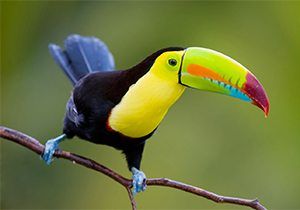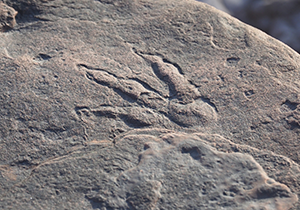
Life in the rainforest primary resource
Discover the animals, insects, plants and people that make the African rainforest their home
This primary resource introduces children to the ecosystems of the African rainforest. Discover the animals, insects, plants and people that make the rainforest their home. Why are gorillas known as the ‘gardeners of the forest’? What big jobs do ants, spiders, worms and beetles carry out? What does the forest provide for the local tribespeople?
Pupils will learn about different kinds of creatures that live in the African rainforest and the environment that the rainforest provides – and the that the creatures provide the rainforest – in our National Geographic Kids’ Geography primary resource sheet.
The teaching resource can be used in study group tasks for discussion about the connection between the different wildlife and the environment they inhabit. It could be used as a printed handout for each pupil to review and annotate, or for display on the interactive whiteboard for class discussion.
Activity: Ask children to use the information in the resource to make a leaflet about the positive impacts of the rainforests on the Earth. Pupils could choose one of the animals from the poster to research and either make a case study or fact file card about that animal. They could also make a poster about the rainforest, focusing on why it needs protecting.
N.B. The following information for mapping the resource documents to the school curriculum are specifically tailored to the English National Curriculum and Scottish Curriculum for Excellence. We are currently working to bring specifically tailored curriculum resource links for our other territories; including South Africa, Australia and New Zealand. If you have any queries about our upcoming curriculum resource links, please email: schools@ngkids.co.uk
This Geography primary resource assists with teaching the following Key Stage 1 Geography objectives from the National Curriculum:
Pupils should be taught to:
- identify seasonal and daily weather patterns in the United Kingdom and the location of hot and cold areas of the world in relation to the Equator and the North and South Poles.
- use basic geographical vocabulary to refer to: key physical features, including: beach, cliff, coast, forest, hill, mountain, sea, ocean, river, soil, valley, vegetation, season and weather.
National Curriculum Key Stage 2 Geography objective:
Pupils should be taught to:
- identify the position and significance of latitude, longitude, Equator, Northern and Southern Hemispheres, the Tropics of Cancer and Capricorn.
- understand geographical similarities and differences through the study of human and physical geography of a region within North or South America.
Pupils should be taught to: describe and understand key aspects of:
- physical geography, including: climate zones, biomes and vegetation belts, rivers, mountains, volcanoes and earthquakes, and the water cycle.
- human geography: types of settlement and land use, economic activity and trade links, the distribution of natural resources. Use maps and globes to locate countries and describe features.
This Geography primary resource assists with teaching the following Social Studies First level objective from the Scottish Curriculum for Excellence:
- By exploring climate zones around the world, I can compare and describe how climate affects living things.
Scottish Curriculum for Excellence Second level Social Studies objective:
- By comparing my local area with a contrasting area outwith Britain, I can investigate the main features of weather and climate, discussing the impact on living things.
Scottish Curriculum for Excellence Third level Social Studies objective:
- Having investigated processes which form and shape landscapes, I can explain their impact on selected landscapes in Scotland, Europe and beyond.
- I can investigate the relationship between climate and weather to be able to understand the causes of weather patterns within a selected climate zone.
- I can investigate the climate, physical features and living things of a natural environment different from my own and explain their interrelationship.
Scottish Curriculum for Excellence Fourth level Social Studies objective:
- I can explain how the interaction of physical systems shaped and continue to shape the Earth’s surface by assessing their impact on contrasting landscape types.
- I can demonstrate an understanding of weather and climate by explaining the relationship between weather and air pressure.
Download primary resource
More Like

Enter Chester Zoo’s Poster Competition now!

7 steps to surviving an apocalypse (according to science!)

Birds Memory









LEAVE A COMMENT
THANK YOU
Your comment will be checked and approved shortly.
WELL DONE,
YOUR COMMENT
HAS BEEN ADDED!
COMMENTS
hi
CUSTOMIZE YOUR AVATAR